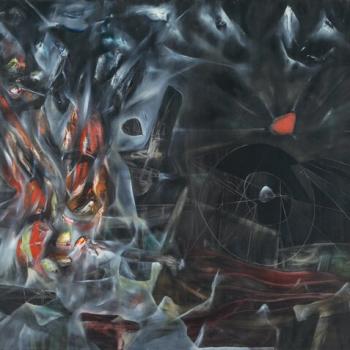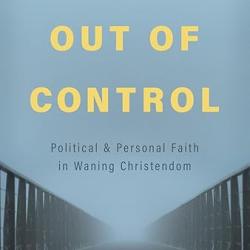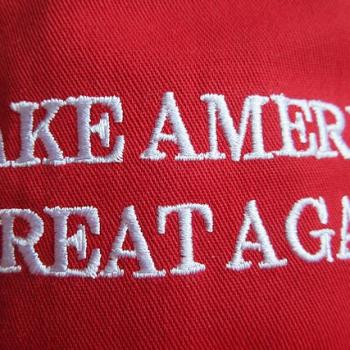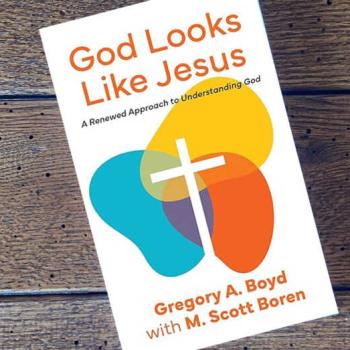*Note: This is a guest post by my friend, Lutheran theologian Ted Peters, one of the most notable and influential Protestant theologians in America. He does not speak for me. He may or may not respond to comments or questions. I will not respond for him. If you choose to respond, know that I (the moderator of this blog) will simply delete any overly lengthy, uncivil, argumentative responses. All responses here must be constructive in nature, promoting dialogue and not debate. This is not a discussion board, so do not respond to other responders.*
2 September 2021 ©Ted Peters
Critical Race Theory Under Criticism
Ted Peters
(Ted Peters is Distinguished Research Professor Emeritus in Systematic Theology and Ethics at Pacific Lutheran Theological Seminary in Berkeley, California. He serves as an interim pastor at Cross and Crown Lutheran Church and School, Rohnert Park, California. See his website: TedsTimelyTake.com. )
We have a problem due to misinformation or perhaps even disinformation. Rumors are rife that Critical Race Theory has infected education and church life like the Corona Virus has infected our bodies. It is alleged that white children in public schools are required to stand up with shame on their faces and confess their white privilege. But, public school teachers with whom I have spoken say that they never heard of such a practice let alone require it.
What about church life? On the one hand, televangelist Pat Robertson calls Critical Race Theory an ‘evil’ that urges black people to take a ‘whip handle’ to whites. 1 On the other hand, my progressive denomination, the Evangelical Lutheran Church in America (ELCA), presses forward on matters of racial justice.2 But, Critical Race Theory has not been the ELCA’s motivator. Love has.
As an exercise in public theology, let me report on what I believe Critical Race Theory (CRT) is. What we find in public education is not CRT per se, even though concerns for racial justice have become important in American education as well as church life.
Critical Race Theory in the Justice System
Critical Race Theory or CRT specifies a set of assumptions drawn from critical theory of the deconstructionist and postmodernist type, upon which a thrust for justice is grounded. First, according to CRT, race is not a biological concept. Rather, it is a social construction. On this point, I agree. I share the view that racial classifications as we know them are the product of fluid social construction and subject to change.
Second, according to CRT, America’s legal institutions are inherently and indelibly racist. Since the eighteenth century, we have sought to establish an impartial judiciary to adjudicate disputes. Our ideal, Lady Justice, stands with her eyes blindfolded so that she cannot prefer the rich over the poor or the poor over the rich. But, complain CRT proponents, that spirit of a racially neutral judiciary has been compromised by cultural, economic, and political exigencies. And in recent years it has become even more unfair in its treatment of Black people. People of African American descent simply cannot trust that the courts will honor Lady Justice.
Third, our current legal system obeys the dictates of the social imaginary perpetrated by the white establishment. Racial inequality emerges from the social, economic, and legal differences that white people create between races to maintain white supremacy. We witness the effluent of this racist pollution in labor markets, education, and politics; and this gives rise to the plethora of poverty and criminality in minority communities.
The rise of CRT is largely a response to the privatization of American prisons augmented by the War on Drugs that places five African Americans behind bars for only one white person. Any heart set on racial justice simply cowers and breaks in despair when gazing up at the impenetrable wall of injustice cemented by law enforcement, jurisprudence, and a voracious appetite for long prison terms. For the Critical Race Theorist, it appears clear that Enlightenment reason has failed to provide an impartial legal system that could prevent this from happening.
For CRT strategy, this means divesting support from high-
minded discourse surrounding the rhetoric of
“colorblindness” or a “post-racial society.”3 Why? Because white people are incapable of social engagement except when it serves their own white privilege. These ordinarily inspiring goals of the Civil Rights era for post-racial equality just kick up dust to obscure gaining a clear vision of institutional injustice.
Colorblindness as doctrine not only undermines litigation strategies that rely on race-conscious remediation, but also soothes social anxiety about whether deeper levels of social criticism, remediation, and reconstruction might be warranted.4
In short, our society’s commitment to colorblind justice has kicked up a dust cloud that hides the fact that every social relation includes a racialized component. Everywhere you turn, if you’re a person of color, you bump into an institutional wall with a locked door and a “keep out” sign.
Critical Race Theory in Education
This suggests further that CRT must press its political program forward without allies, to bully its agenda forward on its own. Drawing from numerous resources, Tyrone Howard and Oscar Navarro adumbrate CRT pedagogical principles that should influence Critical Race Studies in education.
- Centrality of race and racism—All CRT research within education must centralize race and racism, including intersections with other forms of subordination such as gender, class, and citizenship.
- Challenging the dominant perspective—CRT research works to challenge dominant narratives and re-center marginalized perspectives.
- Commitment to social justice—CRT research must always be motivated by a social justice agenda.
- Valuing experiential knowledge—CRT builds on the oral traditions of many indigenous communities of color around the world. CRT research centers the narratives of people of color when attempting to understand social inequality.
- Being interdisciplinary—CRT scholars believe that the world is multidimensional, and similarly, research about the world should reflect multiple perspectives.5
The white populace shakes in fear that these principles constitute an ideology aimed at punishing Americans of European descent. The implementation of Critical Race Studies in secondary school curricula, in some cases, includes asking white children to consider their white privilege and giving special attention to those marginalized by racism in American history. This has precipitated a pedagogical paroxysm, because traditional educators want to promote a colorblind approach to racial justice. “Critics say this approach injects race into what should be, in their view, a colorblind system. Proponents counter that U.S. schools have never been colorblind and insist they aren’t pushing critical race theory anyway.”6 Now, let’s be clear: what we see in education is not CRT per se, but rather an application to the curriculum under banners such as Critical Race Studies (CRS).
On another front, the influence of CRT on education is being blamed for the new wave of discrimination against Americans of Asian descent. According to data drawn from standardized tests, Asian students at secondary and university levels simply outperform their counterparts identified with other races. We would expect, then, that admission to prestigious universities based strictly on merit would yield a disproportionately high percentage of Asian faces in the classrooms. In fact, this is exactly what is happening. Now, however, this excellence is being punished on racial grounds. Under the banner of CRT, it appears that Americans of Asian descent are being removed from the people of color counterrace category so as to make room for those of African descent. Asian Americans are blowing the whistle and crying, “foul.”
CRT “praises or blames members of a particular race solely because they happen to be that race and seeks to interpret all forms of perceived injustice through a racial lens. This ideology has swept through America’s educational system at every level and is erasing our different narratives as Asian Americans from different backgrounds and — to our shock — marginalizing our children and us…. The ugly truth about critical race theory is that it inevitably seeks to fight racial hierarchies by instituting new forms of racial hierarchies. ”7
At minimum, this skirmish reveals how the simple binary between the white race and people of color is much more arbitrary and fluid than it might at first seem.
But is CRT itself to blame here? It may be the case that arrows aimed at CRT should be aimed at a different target. Perhaps we should distinguish between Critical Race Theory and Critical Race Studies. Here’s how David Theo Goldberg, a defender of CRT, draws the line.
Critical race theory refers to a body of legal scholarship developed in the 1970s and ’80s, largely out of Harvard Law School, by the likes of Derrick Bell, Kimberlé Crenshaw, Patricia Williams, Mari Matsuda, and Charles Lawrence, III, among others….Critical race studies, by contrast, encompass a broader, more loosely affiliated array of academic work. Some far more compelling than others, these accounts have been taken up, debated, and indeed sometimes dismissed in the expansive analysis of race and racism in and beyond the academy today. Very little holds all of these accounts together beyond taking race and racism as objects of analysis.8
Critical Race Theory in Our Churches
In addition to education, what is called “CRT” has been thought to be disruptive within churches. In the 2019 Southern Baptist Convention’s Resolution 9 treated CRT along with intersectionality respectfully but then voted to follow a biblical path—read: colorblind path–to racial justice rather than secular versions of social justice.
RESOLVED, That while we denounce the misuse of critical race theory and intersectionality, we do not deny that ethnic, gender, and cultural distinctions exist and are a gift from God that will give Him absolute glory when all humanity gathers around His throne in worship because of the redemption accomplished by our resurrected Lord.9
One Southern Baptist pastor of African American descent, Voddie Baucham, asks for a stronger denunciation of CRT and similar social justice ideologies. He fears giving any quarter to CRT could lead to a white backlash within Christian churches. Self-described as a fire breathing TULIP five-point Calvinist, Baucham is now serving as dean of theology at the African Christian University in Zambia. In 2021 he published a best seller, Fault Lines.10 “I’m worried about a rise in white supremacy and actual racism because of the rise of CRT,” he says. “We have run away from the only solution to racism—the Gospel–in favor of a non-solution. ‘Savior theology’ is the answer.”11 Whether Baucham is opposing CRT in its primary legal form or in a copycat ecclesial form needs clarification.
Despite his opposition to CRT, Baucham supports the colorblind approach to racial equity on biblical grounds. We are commanded to model the Scripture which states: “There is neither Jew nor Gentile [no racism], neither slave nor free [no classism], nor is there male and female [no sexism], for you are all one in Christ Jesus.” 12 Opposition to CRT is by no means opposition to racial equality.
Regardless, it’s time for careful discernment in the churches. That’s the opinion of an editorial in the Arkansas Democrat Gazette. “CRT, like any worldview framework, should be evaluated. That, however, is easier said than done, even in the Church. Advocates often point to common ground between Critical Race Theory and the Christian worldview (for example, the commitment to justice and human dignity), and label any critiques of CRT as convenient ways to avoid confronting injustice and racism (which may not be true, but often is).”13
Siding against the colorblind approach, the editors of the classic liberal Protestant magazine, Christian Century, quite predictably blow the prophetic whistle: “Treating CRT as a bogeyman allows its opponents to protect institutional and cultural power for themselves.”14
Conclusion
Here is what we tell families with children in our Cross and Crown Lutheran School:
The current social topics of LGBTQ and Critical Race Theory are not in our curriculum, but love and justice are.
Our children of multiple races and backgrounds bond as one Christian family.1
In sum, I applaud CRT for recognizing the fluidity of racial classifications due to their origin in social construction. With this as a working assumption, there is hope that these classifications and their connotations of rank and supremacy can be successfully deconstructed and reconstructed.
However, one CRT assumption is dangerous, namely, the assumption that American jurisprudence is beyond redemption by the Enlightenment commitment to justice. The assumption that we should give up on our vision of a colorblind society could possibly lead first to chaos and then to totalitarianism. When in chaos, the bully wins. Thrasymachus wins over Socrates, and justice is reduced to the will of the stronger. Might makes right! There will be no recourse for appeal.
We dare not smudge the image of Lady Justice, blindfolded to special interests while holding the balance in her hands. We dare not discard the mandate lifted up by Leviticus 19:15: “You shall not render an unjust judgment; you shall not be partial to the poor or defer to the great: with justice you shall judge your neighbor.” In our dark cave of institutional injustice, we should shine the bright light of Socrates: Justice is “absolute and eternal and immutable.”
Justice cannot be left to “opinion only.”16
1 Cited in Independent (27 July 2021); https://www.independent.co.uk/news/world/americas/pat-robertson-criticalrace-theory-b1873399.html.
22 “How Strategic and Authentic is Our Diversity: A Call for Confession, Reflection and Healing Action,” adopted by the fifteenth triennial Churchwide Assembly on August 9, 2019 at
Milwaukee,Wisconsin; https://download.elca.org/ELCA%20Resource%20Repository/Strategy_Toward_Authentic_ Diversity.pdf?_ga=2.268667378.2061013074.1595792543–301935741.1595430762 ..
- On the one hand, appreciation should be registered for “whites’ innovation in reproducing, revising, and at times resisting white supremacy and corresponding logics.” On the other hand, the doctrine of colorblindness hides something, according to Jennifer Mueller. “I elevate colorblindness as a culturally recursive accomplishment grounded in an epistemology of ignorance—that is a process of knowing designed to produce not knowing surrounding white privilege and structural white supremacy.” Jennifer C. Mueller, “Producing Colorblindness:
Everyday Mechanisms of White Ignorance,” Social Problems 64 (2017) 219-238, at 219: doi:
10.1093/socpro/spw061. This pointing out of white ignorance that can be discerned only from the experience of the victims of white supremacy is reminiscent of Marxist epistemology, according to which only the victimized proletariat can have proper knowledge of the class struggle. This has pedagogical implications. Education should include “interrupting the ‘life as usual’ conditions that allow students to sustain ignorance about often covert and highly institutionalized mechanisms of material reproduction. Most vitally, strategies should involve personally centered, active investigation. This approach makes it harder for white students to avoid a relational understanding about how their personal whiteness attaches to real material power and greater access to resources of all kinds in the world, including the ability to reproduce personal and corporate white privileges.” Ibid., 235.
- Kimberlé Williams Crenshaw, “Twenty Years of Critical Race Theory: Looking Back to Move Forward,”
Connecticut Law Review 43:5 (July 2011) 1253-1348, at 1326-1327. CRT, as one would expect, supports Black Lives Matter (#BLM). More. CRT is intersectional, concerned with women’s rights and LGBTQ+ rights. “The concept of intersectionality is important within the context of #BLM.” Adrienne D. Dixson, “What’s Going On: A Critical Race Theory Perspective on Black Lives Matter and Activism in Education,” Urban Education 53:2 (2018); https://0–doi–org.grace.gtu.edu/10.1177/0042085917747115 .
- Tyrone C. Howard and Oscar Navarro, “Critical Race Theory Twenty Years Later: Where Do We Go From Here?” Urban Education 51:3 (2016; https://0–doi–grace.gtu.edu/10.1177/0042085915622541. Here is the problem for which CRT is the remedy, namely, previously marginalized races are creative produces of knowledge but their knowledge goes unacknowledged. “Although students of color are holders and creators of knowledge, they often feel as if their histories, experiences, cultures, and languages are devalued, misinterpreted, or omitted within formal educational settings.” Delores Delgado Bernal, “Critical Race Theory, Latino Critical Theory, and Critical RacedGendered Epistemologies: Recognizing Students of Color as Holders and Creators of Knowledge,” Qualitative
Inquiry 8:1 (2002) 105-126, at 106. https://0–doi–org.grace.gtu.edu/10.1177/107780040200800107 . “Together, CRT and LatCrit form a lens for educational research that acknowledges and supports systems of knowing and understanding that counter the dominant Eurocentric epistemology,” 125.
- Laura Meckler and Hannah Natanson, “As schools expand racial equity work, critics see a new threat in Critical
Race Theory,” The Washington Post (May 3, 2021);
(https://www.washingtonpost.com/education/2021/05/03/critical-race-theory-backlash/
- Asra Q. Nomani, “Asian American students have a target on their backs thanks to critical race theory,” USA Today (March 26, 2021); https://www.usatoday.com/story/opinion/2021/03/26/tj–high–school–admissions–race–asianparents–column/6982183002/.
- David Theo Goldberg, “The War on Critical Race Theory” Boston Review (May 7, 2021); http://bostonreview.net/race–politics/david–theo–goldberg–war–critical–race–theory.
- SBC, “On Critical Race Theory and Intersectionality” (June 1, 2019); https://www.sbc.net/resourcelibrary/resolutions/on-critical-race-theory-and-intersectionality/.
- Objections to SBC’s Resolution 9 can be found in Voddie Baucham, Fault Lines: The Social Justice Movement and Evangelicalism’s Looming Catastrophe (New York: Regnery, Salem Books, 2021). Baucham has been criticized for plagiarism and misquoting sources. His publisher defends him. Bob Smietana, “Voddie Baucham’s publisher defends Fault Lines against plagiarism claims,” Religious News Service (August 3, 2021); https://religionnews.com/2021/08/03/voddie-bauchams-publisher-defends-fault-lines-against-plagiarism-claims/.
- Cited by Stephanie Martin, “Voddie Baucham: Why Critical Race Theory is a Looming Catastrophe,” Church Leaders (May 12, 2021); https://churchleaders.com/pastors/pastor-articles/394150-voddie-baucham-critical-racetheory.html. 12 Cited by Roger Wheelock, “Critical Race Theory: A Cult with Demonic Roots that Must be Opposed by All
Christians – a Summation of the Book ‘Fault Lines’ by Renowned American Black Pastor Voddie Baucham,” GTI Ministries (July 5, 2021) Baucham’s italics; https://gtimin.com/blogs/worldview/critical–race–theory–a–cult–with–demonic–roots–that–must–be–opposed–by–allchristians.
- John Stonestreet and Timothy D. Padgett, “Critical Race Theory Conflicts with Christian Worldview,” Breakpoint in Arkansas Democrat Gazette (February 20,2021); https://www.arkansasonline.com/news/2021/feb/20/critical-racetheory-conflicts-with-christian/.
- The editors, “Critical race theory is a gift to Christians,” The Christian Century online (June 28, 2021; https://www.christiancentury.org/article/editors/critical-race-theory-giftchristians?utm_source=Christian+Century+Newsletter&utm_campaign=28d09f48ff-
EMAIL_CAMPAIGN_EdPicks_2021_6_29_crt&utm_medium=email&utm_term=0_b00cd618da-28d09f48ff82353743.
- Cross and Crown Lutheran Church and School, https://crossandcrownschoolrp.org/Home. 16 Plato, Republic, V, S479.












